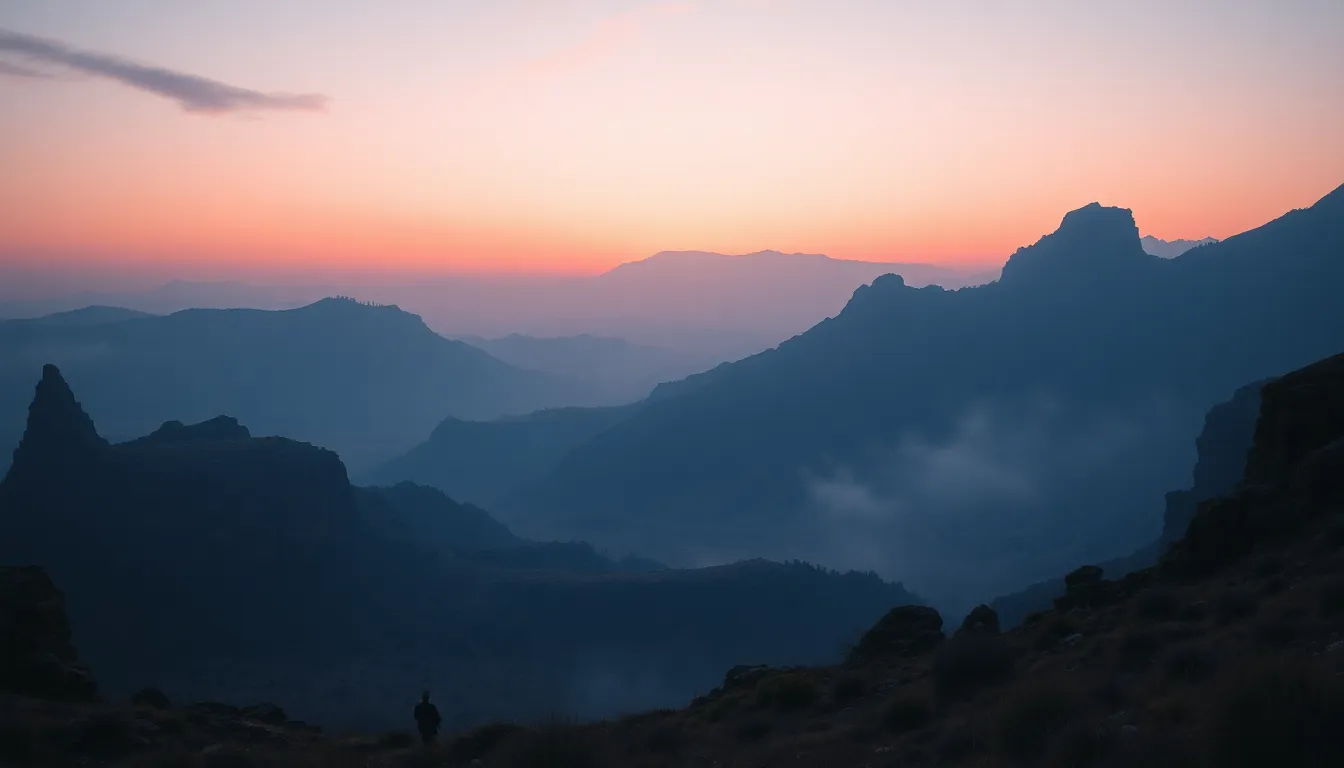Legends Beneath Our Feet: The Sacred Sites Buried in History
Introduction: Unearthing the Past
Sacred sites are places imbued with spiritual significance, often revered in various cultures and religions. They serve as focal points for worship, reflection, and community gatherings, and they carry deep historical and cultural narratives. This article delves into the layers of history and legends associated with sacred sites, unveiling the stories buried beneath the surface and exploring their lasting impact on humanity.
The Concept of Sacredness: What Makes a Site Sacred?
The concept of sacredness varies across different religions and cultures. A site may be considered sacred due to:
- Religious significance: Locations where divine events occurred or where deities are believed to reside.
- Historical importance: Sites tied to significant cultural or historical events.
- Natural beauty: Places that possess extraordinary natural features are often seen as sacred.
- Community practices: Sites that are central to rituals and traditions of a community.
These criteria help define what makes a site sacred, but the emotional and spiritual connections people have to these places are what truly solidify their sacredness.
Ancient Civilizations and Their Sacred Spaces
Throughout history, ancient civilizations constructed sacred spaces that reflected their beliefs and values. Notable examples include:
- Mesopotamia: The ziggurats of ancient Sumer were temple towers dedicated to the gods, serving as both religious and administrative centers.
- Egypt: The pyramids and temples, such as the Temple of Karnak, were built as tombs for pharaohs and places of worship, reflecting the civilization’s complex beliefs about the afterlife.
- Indus Valley: The Great Bath at Mohenjo-Daro is believed to have held significant ritualistic importance, possibly linked to purification rites.
These sites played a crucial role in their respective cultures, acting as centers for worship, governance, and community identity.
Buried Legends: Myths and Stories Linked to Sacred Sites
Many sacred sites are steeped in myths and legends that shape their significance. For instance:
- The legend of Atlantis is often associated with various locations, believed to be a lost advanced civilization that vanished beneath the waves.
- The stories of the lost city of El Dorado connect it to sacred sites in South America, where gold and spiritual abundance were thought to reside.
- In Hindu tradition, the Ganges River is not only a vital water source but also a sacred entity, with countless myths surrounding its origin and significance.
These myths enhance our understanding of sacred sites, illustrating how storytelling enriches cultural heritage and spiritual practices.
Archaeological Discoveries: Unearthing Sacred History
Archaeology has played a pivotal role in uncovering the histories of sacred sites. Significant discoveries include:
- Stonehenge: This prehistoric monument in England is believed to have been a site for rituals, astronomy, and possibly burial practices, revealing insights into Neolithic cultures.
- Machu Picchu: The Inca citadel in Peru, often referred to as the “Lost City of the Incas,” is thought to have had religious significance and served as a royal estate.
- The Temple of the Sun: Located in Cusco, Peru, this temple was central to Incan worship and is a testament to their advanced architectural skills and spiritual beliefs.
These archaeological finds not only provide a glimpse into the past but also contribute to the ongoing narratives of sacredness and cultural identity.
The Spiritual Significance of Sacred Sites in Contemporary Society
In today’s world, many people continue to connect with sacred sites through spiritual practices. These connections manifest in various ways:
- Pilgrimages: Many religions have established routes that lead to sacred sites, allowing followers to deepen their faith and experience spiritual renewal.
- Rituals and ceremonies: Modern practices often incorporate elements from ancient traditions, reflecting a continuum of spirituality.
- Environmental stewardship: Recognition of the spiritual significance of nature has led to movements aimed at protecting sacred landscapes.
These sites remain vital to contemporary religious and spiritual movements, bridging the past with the present.
Preservation and Protection: The Challenges Facing Sacred Sites
Despite their importance, sacred sites face numerous threats:
- Tourism: While tourism can support local economies, it often leads to degradation and commercialization of sacred spaces.
- Urban development: Expanding cities can encroach on sacred sites, leading to their destruction or diminished significance.
- Climate change: Natural disasters and shifting climates pose a risk to the physical integrity of these sites.
Efforts are underway globally to preserve and protect these locations through legislation, community engagement, and sustainable practices.
Global Perspectives: Sacred Sites from Around the World
Sacred sites exist in every corner of the globe, each reflecting unique cultural values. A comparative look reveals:
- The Vatican: A central hub for Catholicism, it houses significant religious art and architecture.
- The Great Wall of China: While primarily a fortification, it holds deep historical significance and cultural pride.
- Indigenous sites: Locations like Uluru in Australia are sacred to Indigenous peoples, representing a profound connection to ancestry and land.
The perception and treatment of these sites vary widely, influenced by cultural, historical, and social contexts.
The Future of Sacred Sites: Reclamation and Revitalization
As awareness of the importance of sacred sites grows, trends in their reclamation and revitalization are emerging:
- Indigenous communities are increasingly advocating for the recognition of their sacred sites, reclaiming their ancestral lands.
- Revitalization projects aim to restore and maintain sacred sites, ensuring they remain integral to cultural identity and heritage.
- Education and awareness campaigns help promote respect and understanding of these sites, fostering a sense of stewardship among visitors.
These efforts are crucial for preserving sacred sites for future generations, allowing them to connect with their cultural heritage.
Conclusion: Walking on Sacred Ground
Understanding and respecting sacred sites is vital for appreciating the rich tapestry of human history and spirituality. These locations are more than mere remnants of the past; they are living testaments to our collective journey. As we explore the legends beneath our feet, let us engage with these sites thoughtfully and reverently, ensuring their stories endure for generations to come.



